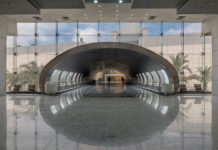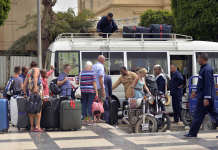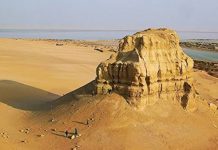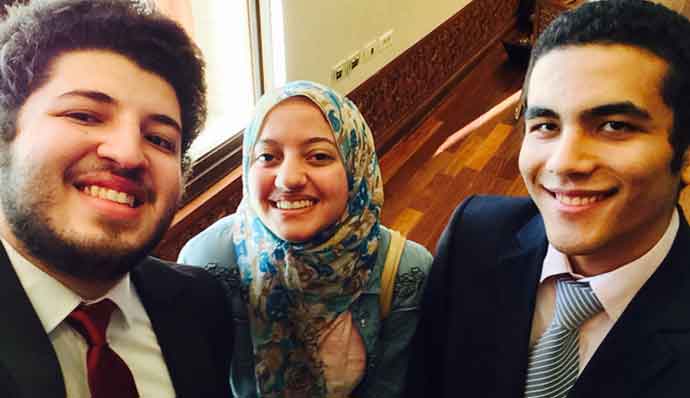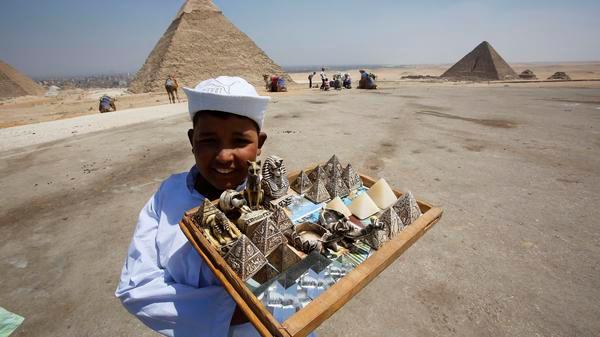
Events in the country since 2011 have caused a regress in the movement of tourism in Egypt, and the decreasing number of tourists has directly affected the tourism movement and, therefore, the occupancy of hotels compared with 2010, especially in the occupancy of floating hotels operating between Luxor and Aswan and cultural tourism in Cairo and at archaeological sites.
Singapore and Armenia have recently imposed a travel ban on Egypt, particularly tourist cities such as Hurghada, Sharm al-Sheikh, Luxor and Aswan in light of recent incidents in North Sinai which left 17 soldiers dead.
The Polish authorities also issued a travel ban on Egypt early this month in the wake of the assassination of the General Prosecutor and the incidents in North Sinai. The effects on the tourism movement in Egypt were expected as the Polish market is the seventh on the list of nations sending tourists to Egypt. Italy is also expected to ban Egyptian beaches, but its understanding of the conditions has so far prevented it from doing so. Italy has already imposed warnings that Cairo is a city that has seen several terrorist incidents.
In spite of these events, Egyptian hotels have seen unexpectedly high occupancy rates in the current season and during Eid holiday, particularly with visitors from Arab nations. Despite the fears of the tourism sector regarding the occupancy percentages, particularly after the incident at the Italian Consulate earlier this week, there have been no cancellations of reservations by tourist groups.
Tourism Minister Khaled Rami officially announced that the Lesser Bairam witnessed a flourish in tourism, pointing to 93 per cent hotel occupancy in Sharm al-Sheikh and 95 per cent in Ain Sokhna and Ras Sudr, 90 per cent in Hurghada and 91 per cent in Alexandria, the North Coast and Marsa Matrouh.
A decision was therefore taken by the minister of tourism to extend the “Luxor and Aswan in Our Hearts” initiative to a third phase in coordination with the ministries of aviation, antiquities, culture and transport until 30 September at lucrative rates. The decision came after the great success of the first and second phases of the initiative which was launched in cooperation with Misr Travel, EgyptAir Tourism Company Karnak and the Hotel Facilities Chamber to cover various tourism and transport programmes. Transport means include planes, trains and buses to meet all brackets of society.
The direto of the Tourism Promotion Authority, Samy Mahmoud, said tourist revenues had seen an unprecedented increase of 30 per cent compared with last year, exceeding the revenues index of US$9bn after having registered US$7.2bn in 2014.
There has been a tangible increase in the number of Arab tourists visiting Egypt, particularly during the Bairam, in Hurghada and Sharm el-Sheikh. Mahmoud expects the increase in Arab tourists will exceed 22 per cent in occupancy of hotels and tourist resorts in the near future, starting from the Lesser Bairam holidays. The number of tourists coming to Egypt by the end of this year is expected to increase with the state of stability in the country. As for hotel reservations in Hurghada and Sharm al-Sheikh, these are expected to reach 11 million with an increase of 30 per cent compared with 2014, Mahmoud said.
The downturn cultural tourism has been obvious over the past few years, leading to a decrease in tourism occupancy rates in Luxor and Aswan, which registered only 13 per cent in Luxor and 15 per cent in Aswan, and 14 per cent in floating hotels. In Cairo and Giza the rates were 51 and 41 per cent respectively.
Tourism occupancy rates in hotels and towns in the Red Sea Governorate increased to 98 per cent during the Bairam. The number of tourists staying at hotels and tourist resorts in the Red Sea Governorate reached 63.9 per cent, with the 93,257 tourists registered including 22 Arabs, 4750 Egyptians and 8,8485 foreigners in all cities.
Hurghada came first in occupancy numbers with 58,69 tourists representing 66.3 per cent. In Safaga occupancy reached 67.2 per cent, or 19,915 tourists. Marsa Alam came third with 11,777 tourists representing 58.4 per cent, then Qusair registering 34.8 per cent with 2,696 tourists.
As for Luxor and Aswan, the head of the Chamber of Travel and Tourism Companies in Aswan, Abdel-Hadi Muhammad Ali, said occupancy rates were much lower and represented only 7 per cent, which was only natural during the summer months. They were expected to increase in the near future, he said.
Ali added that 28 floating hotels were now operating between Luxor and Aswan, far fewer than the usual 255 hotels. Only 28 tourists headed for Abu Simbel, far less than previous visitor numbers.
Percentage of expenditure
The Tourism Minister’s Economic Adviser and Head of the Sub-Calculations Unit Dr Adla Ragab says Arab tourists topped the list of big spenders last year. Tourists from the UAE spent the most while visiting Egypt, with an average expenditure by each tourist per night of US$149.5. Saudi Arabia came second with US$131.5 per night, according to a report on the sub-calculations unit.
The UK came third with US$70.1 per night, while the Italians spent US$70 s and Germans spent US$62.9 per night, the report said.
The average spending of Polish tourists was US$62.7 per night, while Ukrainian tourists spent US$61.7 per night. Russia was at the bottom of the list with Russian tourists spending an average of US$56.7 dollars per night.
About three million Russian tourists visited Egypt in 2014, making them 31.1 cent of the total number of tourists to Egypt.. Non-resident Egyptians spent US$4.1bn of the total tourism expenditure, at 43 per cent in 2013. The spending of foreign tourist groups reached US$6bn of the total spending by tourists.
The report showed that tourist spending on food and beverages reached 26 per cent, followed by transport services at 20 per cent, while spending on other products not related to tourism reached 17 per cent and hotel services accounted for 12 per cent. Cultural, sports and entertainment services took 11 per cent, and travel companies services 7 per cent. The report showed the amount of local tourism spending at 15 per cent, and the spending of staying tourists 57 per cent and one-day tourists by 18 per cent.
The spending of tourists leaving the country reached 3.4 per cent, while pilgrims accounted for 51 per cent of the total expenditure. Pilgrims’ expenditure was 6 per cent, while spending for other purposes was 43 per cent.
The report said tourism was one of the most important sources of foreign currency with revenues amounting to 15.5 per cent of total foreign currency revenues. Tourism revenues from foreign visitors represented about 11.7 per cent of the total Gross Domestic Product. Tourism contributed to providing direct and indirect job opportunities by about 12.6 per cent of the total labour force. The total added value of tourist industries was about LE139bn, according to the report.
First class passenger transport services came to about 42.6 per cent, while tourism’s contribution to tax revenues in 2013 was LE3bn, or 5 per cent of the total taxes which amounted to LE64.5bn. The direct added value of tourism reached LE68.9bn with a 3.6 per cent contribution to the total added value to the economy.



